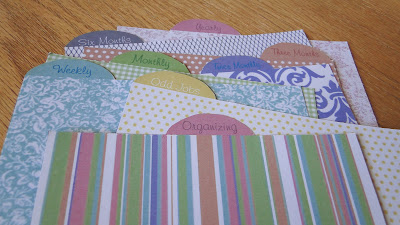 |
| All this talk of food made me hungry. Here is a picture of an asparagus quiche I made. |
I wrote this post for another blog my sisters and I have to help each other stay healthy. I thought I'd share it here.
I am a bit leery of promises that I can lose 50 pounds in a month like Rachel Ray just by following one little trick, or shed the pounds by only eating one miracle food, or by dropping a food group entirely. I feel if there was a quick and easy cure for obesity, we'd already know about it. Basically I figure if it sounds too good to be true, it probably is. I'd much rather look into the science behind weight loss and how the human body processes calories, and tried to sum up some of the random facts about weight loss that I've found helpful over time, presented in no particular order.
Hope you find it useful :)
*I am not a doctor, dietician, or a
nutritionist, just a biologist who likes to know what's going on with
her body when she's trying to lose weight. I am not promising you'll loose 50 pounds in a month, or anything else. Some of these facts may be replaced in the future as science learns more about how our bodies work. Haha, I love small print!
1.
Your body has a set point. This means your body will try
very hard to maintain the same weight-and it is a lot easier to raise
your set point than to lower it. You'll need to get started losing
weight by being diligent with exercise and careful of how you eat.
Lowering your set point is more successful when you lose weight slowly,
and maintain it for a few months before trying to lose more. People
tend to lose about 10% and plateau, and while this may not be the end
goal you are looking for, let your body adjust to your new portion sizes
of food and rate of exercise. After a pause, kick things up a notch
and go for your next 10%. Slow weight loss is much more likely to stay
off for good.
(Here is a good article explaining what a set point is and how it affects weight loss. )
2.
Sleep matters. If you aren't getting enough sleep, you
probably won't lose weight as fast. They haven't pinpointed exactly
why, but one reason might be that you are up longer and get hungry again
a while after you'd had dinner, and eat when you might be sleeping.
You also don't have the control you might if you are rested, and lack of
sleep messes with your metabolism either way.
3.
Don't deprive yourself-just be strict with portion control.
Complete deprivation of a favorite food will lead to binges, then guilt,
then you might get depressed and throw in the towel. Eat a shake if
you want, just don't do it every day, or finish it if you start to feel
full.
4.
You don't belong to the clean plate club anymore. It is ok to leave food on the plate. Learn to pay attention to when your body says you are done, not when the plate does.
5.
Eating out...it can be HARD to stay on track when eating
out. Remember these places are there to sell food, and most don't care
how healthy the food is, as long it tastes good so you buy a lot and
come back for more.
Here are a few tricks:
Go for the salad if you like-but skip the dressing and toppings like
cheese and croutons. Some of those salads have more calories than
getting a hamburger meal. Ask for the dressing on the side and just dip
your fork or each bite. You'll eat less of the dressing but still get
the taste.
Grilled chicken (hold the mayo) is also a good option, and don't feel
too bad about a plain old hamburger now and then-sometimes it can be one
of the lower calorie options.
Sometimes you can ask for half portions for half the price even if it isn't on the menu.
Don't be afraid to ask for other favors-like sauces on the side and requesting the meat be grilled not fried.
If you know they are going to give you a large serving, ask for a
container when you start, and put half in before you even start eating.
If you are eating with other people, eat slowly, so you don't feel like
you need to take more to be social while others are still eating.
Remember to keep sipping your water, and move the glass directly in
front of you when done to give your hands something to do while you are
waiting.
6.
Drink enough water. Sometimes it is easy to confuse thirst
with hunger. If you think you feel hungry, try a glass of water first
and wait a bit to see if you really want to eat. Drink a glass just
before eating a meal. There is a reason resturants serve lots of water
with their meals...
7.
Eat colorful food (no, not a bowl of Trix). Naturally
colorful foods usually have more nutrition per calorie, and are visually
satisfying than a plate of beige food. Try for a variety of colors
with each meal-and include white. White fleshed fruits like apples and
pears may help reduce the risk of strokes.
8.
Go whole grain. Brown rice, whole wheat bread, oatmeal, etc. have more fiber and nutrition per calorie.
9.
Fiber is good. Besides filling you up and keeping your
digestive tract moving, it binds with fat in the digestive tract so less
is absorbed. Make every calorie coming in work for you by bringing
with it fiber or vitamins, etc. Avoid highly processed food-white flour
and refined sugars are the worst culprits when it comes to delivering
empty calories.
10.
Snacks are good-if you pick them wisely. Eat meals at a
regular time, and plan for a few healthy snacks in-between. If you let
yourself get too hungry, you'll overeat at the next meal. When you feel
deprived and hungry all the time while dieting, you'll be less likely
to stick to it. Combining a carb and a protein will keep you satisfied
longer than just a carb.
11.
Don't give up. If you slip and eat something you shouldn't,
this doesn't give you permission to give up on the rest of the day or
week. Let it go, and keep on track. If you stub your toe, you don't
keep kicking the rock...
12.
Be aware of the law of diminishing rewards. The first bite
tastes the best, but the more you eat, the more your brain starts to
tune out the flavor. (The same thing happens with smells-you'll notice a
scent when you first walk in a room, but once you've noticed it, you
tune it out. It happens with touch as well. You probably won't notice
it until I mention it, but can you feel where your shirt is touching
you?) You may want second helpings, but you won't have the same
satisfaction when you eat it.
13.
Spice it up. Flavorful food is a lot more satisfying than
bland food, and you'll pay more attention to it, helping you notice when
you start to feel full. Texture, color, variety and temperature are
important too-warm foods are more filling, and crunchiness and taste add
variety to the food. If food isn't appealing, you tend to eat more of
it in search of satisfaction. Have fun preparing your food, and enjoy
eating it!
14.
Are you done? Your body takes a bit of time-sometimes 30
minutes-to get the signal to your brain that you are full. Stop when
you first notice this feeling-you probably have already eaten a bit more
than you needed in order to feel satisfied for a while. Resist
munching a bit more, but if you must, then switch to something with few
calories. Eating slowly also prevents overeating for this same reason,
you don't eat as much in the time between when you are full and when the
signal hits your brain. This is why you sometimes are enjoying a meal
and all of a sudden realize you ate WAY too much. Blah.
15.
Have strict rules about where you eat. Make each meal a
ceremony-set the table, sit down, and don't do anything else while
eating-focus on the food. Most empty calories are eaten while reading
or watching TV. If you must munch while reading, keep something like a
bag of precut veggies ready, and have a specific place you eat and
read. Avoid eating while on the couch, so it doesn't trigger hunger
cues whenever you sit down.
16.
Write it down. It is easy to eat more than you think you are
if you aren't keeping track. Besides keeping track of what goes in,
try keeping track for a few days of the times you get hungry-and what
you are doing when you first feel hungry, and how you feel when you
notice you have a craving. You might be surprised to find you expect a
snack every time you sit down to the computer-or you get cravings when
you finish something and are a little bored. Recognizing triggers will
help you control cravings. If you consistently get hungry at the same
time of day no matter what you are doing, try planning a snack for that
time.
17.
Eat Breakfast!! Some carbs with a protein get your
metabolism going...which is a good thing. Your body shuts down a bit to
conserve energy while you sleep. Once you eat in the morning, it gets
things going, and you burn more calories while just sitting there. Eat a
bit just before exercising if you plan on going first thing in the
morning to help you make the most of the workout-even a handful of
almonds or something helps.
18.
Food Food Everywhere! Our bodies are not equipped to deal
with a surplus of food. Throughout history, a lack of food has
typically been the problem. We are designed to crave fats and sugars,
and then hang on to every calorie coming in. You aren't weak, you are
just designed this way. This doesn't mean you have no control, it just
helps to recognize why it is so hard to walk away from food. Sometimes
it helps to have an internal dialogue that goes like this: "Yes, I see
you, you lovely bowl of (insert favorite treat here), and my body thinks
it needs you. It is my brain that controls my arms though, and I'm
going to tell them to go get that apple and a glass of water first.
When I'm done with the apple, I'll think about coming back when I'm a
little more objective."
19.
Leave emotion out of it. Don't ever reward yourself with
food, or comfort yourself with food, and be very careful about how you
entertain yourself with food. Come up with other things that you find
rewarding, comforting, or entertaining, and don't eat because you are
sad, happy, or bored. Eat because you need to fuel your body.
20.
Be careful of diet food. Artificially sweetened foods may not be your friend for the following reasons:
Many people end up overeating the diet food and take in more calories than they would eating regular food.
Your body knows the difference. A recent
study
showed that your body has a natural drive to satisfy sweet cravings-and
if deprived by abstinence or substitution, it will trigger binging
behavior. Diet drinks were associated with weight gain because sugars
trigger full feelings and also trigger pleasure hormones after eating
while artificial sweeteners
don't-so more food is eaten in an effort to trigger those physical
responses.
Eating artificial sweeteners also increases sugar dependence. A diet high in sweet flavors increases sweet cravings.
Sweet tastes increases your appetite-you eat more if you eat something sweet just before a meal.
Low fat foods may be a good choice-but check the calories. Many low fat
foods are not healthy because the food manufacturer attempts to
compensate for the taste by increasing the sugar or adding sweeteners.
Read the label before eating it. Low fat food that doesn't compensate
is usually ok.
21.
Set yourself up for success. First, get rid of any junk in
your house that will tempt you to eat poorly. Second, plan your meals.
Besides saving you money by preventing impulse buys, you have a plan.
Figure in leftovers and plan for nights you just don't feel up to
cooking by stocking the freezer with some quick, healthy options. Plan
for snacks-if you chop up the celery, wash the grapes and peel the
carrots ahead of time, they'll be ready when you get a snack attack.
And EAT before you go shopping :) I had the WORST craving for pie the
other day while in the grocery store...the only thing that saved me was
that the dang things cost $7 and I wasn't about to pay that for
something I could make myself...
22.
Happy Holidays! If you have a party or a holiday coming up,
don't let it derail you. If you know candy will be around the house or
at work, allow yourself a piece, but don't go back. (It can help for you
to not throw away wrappers. Leave the pile to remind yourself of how
much you've actually eaten!) The same with holiday treats-take small
portions, and plan before you go how much dessert you will eat and stick
to it. Let's face it, holiday food is good, fun to make, and the
holidays wouldn't be the same without it. Go ahead and have some! Just
remember a small piece of the pie tastes the same as the whole thing.
23.
Sorry, there are no miracle foods, pills, or tricks to weight loss (that
work long term). It takes a good old combination of eating fewer
calories than you use up during the day. It's simple physics. Energy
in, energy out. Remember the word of wisdom, and practice moderation in
all things.
So, now we know all this, the trick is to turn knowledge into action.
Remember that if you want different results you need to do something
different. Diets don't work. You have to commit to this way of living.
Asparagus Quiche
This recipe was submitted to Allrecipes.com by Michele O'Sullivan.
Ingredients:
1 pound fresh asparagus, trimmed and cut into 1/2 inch pieces.
10 slices of bacon
2 eight inch unbaked pie shells
4 eggs
1 1/2 cups half-and-half cream
1/2 teaspoon ground nutmeg
salt and pepper to taste
2 cups shredded Swiss cheese.
1 egg white, lightly beaten (I skipped this and just used some of the egg mixture).
Directions:
Preheat oven to 400 degrees.
Steam asparagus until tender but not overcooked.
While asparagus is cooking, cook the bacon until crispy. Drain and set bacon aside.
Beat together eggs, cream, nutmeg, salt and pepper.
Brush
pie shells with egg white (or egg mixture). Sprinkle crumbled bacon
and chopped asparagus into pie shells, top with shredded Swiss cheese
into both pie shells.
Pour egg mixture over bacon, asparagus and cheese, dividing it equally between shells.
Bake
uncovered for about 35-40 minutes or until firm. Let cool to room
temperature before serving. (We ate it hot and it was pretty good that
way too.)
Number Of Servings:12
Preparation Time:prep time 25 minutes, baking time 35 minutes
If you have any other tips please share!!
 Hope you have fun with this! I'd love to see any you make-especially if you go for other superheroes!
Hope you have fun with this! I'd love to see any you make-especially if you go for other superheroes!

































